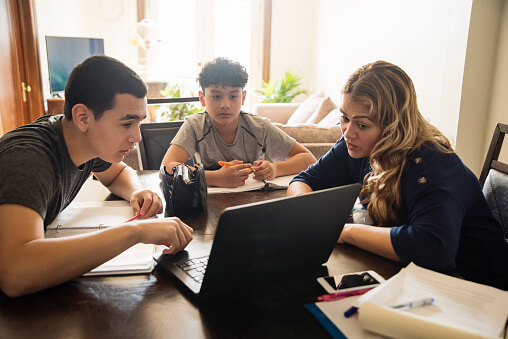
Gifted/Talented Resources,Tools, and Research
Encouraging equitable representation of student populations in G/T programs throughout the state by providing tools and resources that inform and support families and educators.

Results updated as text is entered or upon selection
50 results found


Types of Assessments

Achieving Equity within the District

Supporting and understanding your G/T child

Why are gifted programs needed?

Gifted/talented acronyms
View and familiarize yourself with common gifted education terms and acronyms.

NAGC: What is Giftedness
Learn more about the nature and needs of gifted/talented students.

Overexcitability and the Gifted
Potential student overexcitabilities that may be demonstrated by some gifted/talented students.

NAGC: Myths about Gifted Students
Common myths about gifted/talented students and gifted/talented programs.

Profiles of the gifted/talented
Different profiles of gifted individuals that may help families better understand the nature and needs of gifted/talented individuals.

Identification Process
View Section 2 of the G/T State Plan for more information about identification of G/T students.

Texas State Plan for the Education of Gifted/Talented Students
The Texas State Plan for the Education of Gifted/Talented Students provides accountability standards and guidance to districts.

NAGC Position Statement
Understand more about identifying and serving culturally and linguistically diverse students.

¡Colorín Colorado!
Free resources for families of English Learners.

District Service Options
Districts have a variety of models to provide G/T services. It is important to note that Districts may offer one or more of these options. It is important to be familiar with your rights and know the expectations of the modes of delivery. Your child will be provided their services for acceleration and enrichment through these models. Take a look at the following district approved service options and questions that you are able to ask to advocate for your child.

Recursos para padres
Texas Association for Bilingual Education.

In Culture Parent
This site helps children and families become better global citizens.

TELPAS Resources
TELPAS Resources from the Texas Education Agency.

National Association for Gifted Children (NAGC)
The largest organization representing gifted learners.

The Twice-Exceptional Dilemma
Guidebook including information about the characteristics and needs of twice-exceptional learners.

NAGC Position Statements & White Papers
Position paper on twice-exceptionality from the National Association for Gifted Children (NAGC).

Acronym Database
Database of commonly used acronyms in special population meetings from Texas Project First.

Parent’s Guide to the Admission, Review and Dismissal Process
Learn about the special education process and of your rights and responsibilities to support your child's service decisions.

TXEL.org - Parent and Family Resources
Information and accessible resources for parents and families of English learners.

TXEL.org - Bilingual Education Brochure - English
Learn more about Bilingual Education programs, the process for identifying English learners (ELs) and approved service models.

TXEL.org - Parent/Guardian Rights - English
Your rights as a parent/guardian of an English learner regarding your child’s educational access and programming.

TXEL.org - Parent/Guardian Rights - Spanish
Rights that you have a as parent/guardian of an English learner regarding your child’s educational access and programming

TAGT - Parent Resources
Parent resources from the Texas Association for Gifted/Talented Students

Referring your child for G/T and what to look for in services
How do I refer a child for G/T services? If my student participates in G/T services, what should I expect? The following resources exist to better inform you as you navigate Gifted/Talented services in your child’s district. If you ever have any district-specific questions, consult your child’s publicly available school district’s board-approved policy.

NAGC - Parent/Guardian G/T Resources
NAGC works to provide parents and guardians with the tools you need to help your child succeed.

G/T Discover
Enrichment opportunities for your gifted and talented student both in and outside the classroom.

Talking with your child about giftedness - NAGC
Support in conversations with your child addressing their needs.

Gifted English Language Learners
Texas is a wonderfully diverse state where more than 30 languages are spoken. Approximately 34% of Texas residents speak a language other than English. Of that group, 85% speak Spanish. A linguistically diverse gifted student is a child or youth who has the characteristics of gifted students with the potential for high achievement, whose primary language is one other than English, and whose English language skills are such that the student has difficulty performing ordinary classwork in English.

Twice Exceptional Learners (2E)
Students who are gifted may also have a special need or disability. The term “twice-exceptional,” also referred to as “2E,” is used to describe gifted children who have the characteristics of gifted students with the potential for high achievement and give evidence of one or more disabilities as defined by federal or state eligibility criteria.

Supporting your G/T student in meetings

Common G/T Assessments
G/T assessments that may be provided by your district. Your district may provide other measures that are not on this list.

Access to Service True/False
Download this True or False document to reflect on the equity of district G/T services.

AP as an Intervention for Middle School Hispanic Students
Advanced Placement has been seen as an effective intervention for Latino students.

General Characteristics of Twice Exceptional Learners
Common characteristics of 2E students.

Twice Exceptional Learners Strengths and Challenges
Students who are twice-exceptional may exhibit behaviors that may mask their needs for G/T services.

I'm Not Who You Think I am
Document that details what Twice Exceptional students may need based on behaviors that the student demonstrates.

Activities to do at home with your child

Questions to ask during the referral process

State Plan Guidance
TEA guidance on how to interpret the State Plan for the Education of G/T students.

Celebrate Your Child

TXEL.org - Bilingual Education Brochure - Spanish
Learn more about Bilingual Education programs, the process for identifying English learners (ELs) and approved service models.

TXEL.org - Bilingual Education Brochure - Vietnamese
Learn more about Bilingual Education programs, the process for identifying English learners (ELs) and approved service models.

Parent and Educator Resource Guide to Section 504 in Public Elementary and Secondary Schools

Diversity Toolbox
